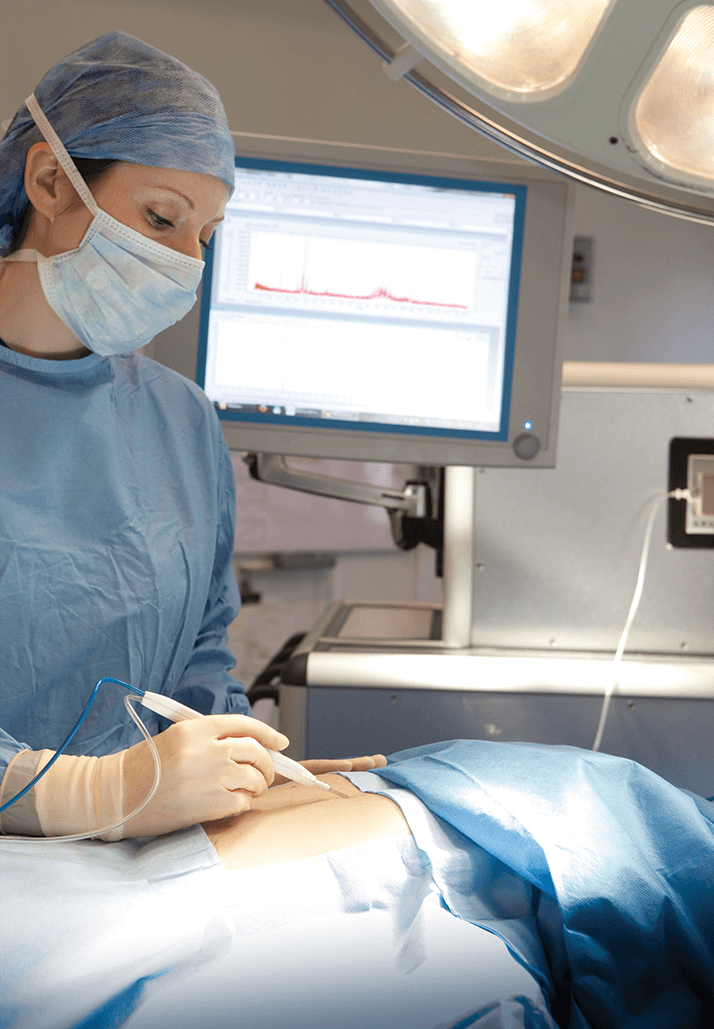Back in July 2013, Zoltan Takats’ iKnife – the ‘intelligent’ scalpel – opened people’s minds to a new kind of mass spectrometry application (1). Exactly one year later, and mass spectrometry enters the operating theater again – this time without the catchy name, but with the same goal: to monitor metabolites intraoperatively with the aim of distinguishing between normal or cancerous tissue (2).

Although the objectives are the same, the ionization technology behind the two surgical tools is different. Rapid evaporative ionization mass spectrometry (REIMS) is at the heart of iKnife, and essentially enables analysis of metabolites from vaporized tissue released by an electrosurgical blade. The latest research from Graham Cooks and his colleagues at Purdue University relies on a technique called desorption electrospray ionization (DESI, also developed by Cooks), in which a microscopic stream of charged solvent is sprayed onto the surface of the tissue. “In a matter of seconds this technique offers molecular information that can detect residual tumor that otherwise may have been left behind in the patient,” says Cooks, “The instrumentation is relatively small and inexpensive and could easily be installed in operating rooms to aid neurosurgeons.” Certainly, a very familiar ambition.
But there is something else that links the two technologies. Waters Corporation announced in July 2014 that it has acquired REIMS technology from MediMass (noting in a press release that REIMS is “substantially all the assets” of the company). The month before, Waters and Prosolia signed an exclusive agreement for DESI technology for clinical mass spectrometry applications. Clearly, Waters are very serious about moving into the clinic.
Jeff Mazzeo, senior director for Waters’ health science businesses, says that the move is part of a wider strategy: “We believe that MS and LC-MS technology is at a real inflection point and is going to have a tremendous impact on patient care over the next 5-10 years. That’s a real motivation behind our strategy.” In terms of applications, Mazzeo cites tissue pathology as a killer application for DESI. “It’s traditionally an area that relies on immunohistochemistry staining and microscopy. Such methods are quite subjective,” says Mazzeo. “MS has a clear advantage: objective, quantitative measurement of compounds.” For REIMS, aside from the aforementioned surgical applications, Mazzeo sees potential for it to push aside MALDI-MS in microbiological identification.
Given that both technologies are still very much in the research phase, Waters is keen to push progress. “Much of our work so far has been a collaboration with the Imperial College London,” says Mazzeo, “We now plan to actively expand the collaboration to other thought leaders and universities that are interested in helping us develop the technology.”
So, how far away are we from an explosion of MS systems in health care? According to Mazzeo, five years does not seem unlikely.
References
- J. Balog et al., “Intraoperative Tissue Identification Using Rapid Evaporative Ionization MS” Sci. Transl. Med. 5, 194ra93 (2013). S. Santagata et al., “Intraoperative MS Mapping of an Onco-metabolite to Guide Brain Tumor Surgery”, Proc. Natl. Acad. Sci. USA 111(30) 10906-10907 (2014).




